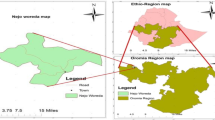Abstract
The strategic use of closantel, a narrow-spectrum salicylanilide anthelmintic against bloodsucking helminths, and of albendazole, a broad-spectrum benzimidazole anthelmintic, in the control of gastrointestinal nematodes of sheep was investigated on a farm in Nyandarua District in the highlands of Kenya. Thirty Corriedale female lambs aged between 9 and 12 months were assigned to three treatment groups of 10 lambs each. The three groups were set stocked on separate paddocks for 12 months. Lambs in group 1 (strategic treatment group) were treated with closantel and albendazole at the beginning and towards the end of the long rains (April and June, respectively) and towards the end of the short rains (December). During the intervening dry season, the lambs were treated with albendazole. Lambs in group 2 (suppressive treatment group) were kept ‘worm free’ by regular deworming with albendazole at 3-weekly intervals for 12 months. The third group of lambs remained untreat ed (control group). Gastrointestinal nematode infections and pasture infectivity were well controlled in the case of the strategic treatment group. This resulted in higher weight gains, wool production, packed cell volume, and serum albumin and protein concentrations compared with the untreated control lambs. These parameters were comparable between the strategic treatment and the suppressive treatment groups of lambs. It was concluded that worm control strategies based on the epidemiology of the parasites and the sustained anthelmintic action of closantel in combination with broad-spectrum anthelmintics can provide effective control of gastrointestinal nematodes of sheep in the study area.
Similar content being viewed by others
REFERENCES
Allonby, E.W., 1976. Annual Report of the Sheep Development Project in Kenya, (East African Veterinary Research Organization (EAVRO), 50
Allonby, E.W. and Urquhart, G.M., 1975. The epidemiology and pathogenic significance of haemonchosis in a Merino flock in East Africa. Veterinary Parasitology, 1, 129–143
Barton, N.J., 1983. Development of anthelmintic resistance in nematodes of sheep in Australia subjected to different treatment frequencies. International Journal for Parasitology, 13, 125–132
Brunsdon, R.V., 1980. Principles of helminth control. Veterinary Parasitology, 6, 185–215
Coles, E.H., 1986. Veterinary Clinical Parasitology, 4th edn, (W.B. Saunders, Philadelphia)
Coles, G.C., Bauer, C., Borgsteede, F.H.M., Geerts, S., Taylor, M.A. and Waller, P.J., 1992. World Association for Advancement of Veterinary Parasitology (WAAVP) method for detection of anthelmintic resistance in nematodes of veterinary importance. Veterinary Parasitology, 44, 35–44
Darvil, F.M., Arundel, J.H. and Brown, P.B., 1978. Effects of anthelmintic treatment of maiden ewes in the periparturient period on pasture contamination and production of prime lambs. Australian Veterinary Journal, 54, 575–584
Dash, K.M., 1986. Control of helminthosis in lambs by strategic treatment with closantel and broad-spectrum anthelmintics. Australian Veterinary Journal, 63, 4–8
Dash, K.M. and Waller, P., 1987 (Winter). Drenchplan: research-based worm control. Rural Research, 135, 4–9.
Donald, A.D., 1983. Anthelmintic resistance in relation to helminth control and grazing systems. In: F.H.M. Borgsteede, Sv.Aa Henriksen and H.J. Over (eds), Facts and Reflections. IV. Resistance of Parasites to Anthelmintics, (Central Veterinary Institute, Lelysted, The Netherlands), 187–198
Gatongi, P.M., 1995. The epidemiology and control of gastrointestinal nematodes of small ruminants in a semi-arid area of Kenya with emphasis on hypobiosis of Haemonchus contortus. (PhD thesis, McGill University)
Hall, C.A., Kelly, J.D., Whitlock, H.V. and Ritchie, L., 1981. The prolonged anthelmintic effect of closantel and disophenol against a thiabendazole selected resistant strain of Haemonchus contortus in sheep. Research in Veterinary Science, 31, 104–106
Hansen, J.W. and Perry, B., 1994. The Epidemiology, Diagnosis and Control of Gastrointestinal Parasites of Ruminants in Africa (ILRAD, Nairobi), 171
Kinoti, G.K., Maingi, N. and Coles, G.C., 1994. Anthelmintic usage in Kenya and its implications. Bulletin of Animal Health and Production in Africa, 42, 71–73
MAFF (Ministry of Agriculture, Fisheries and Food), 1986. Manual of Veterinary Parasitological Techniques, (Technical Bulletin No. 18, HMSO, London), 131
Martin, P.J., Anderson, N., Jarret, R.G., Brown, T.H. and Lord, G.E., 1982. Effects of a preventive and suppressive control scheme on the development of thiabendazole resistance in Ostertagia spp. Australian Veterinary Journal, 58, 185–190
Martin, P.J., Anderson, N., Lwin, T., Nelson, G. and Morgan, T.E., 1984. The association between frequency of thiabendazole treatments and the development of resistance in field isolates of Ostertagia species of sheep. International Journal for Parasitology, 14, 177–181
Michel, J.F., Cawthorne, R.J.G., Anderson, R.M., Armour, J., Clarkson, M.J. and Thomas, R.J., 1983. Resistance to anthelmintics in Britain: husbandry practices and selective pressure. In: F.H.M. Borgsteede, Sv. Aa. Henriksen and H.J. Over (eds), Facts and Reflections. IV. Resistance of Parasites to Anthelmintics, (Central Veterinary Institute, Lelystad, The Netherlands), 41–59
Nansen, P., 1991. Strategies for development and establishment of cost-efficient and sustainable control programmes for helminth infections in the developing countries. FAO Expert Consultation on Helminth Infections of Livestock in Developing Countries (FAO (AGA)/HIL/91/14, Rome), 17
Prichard, R.K., Hall, C.A., Kelly, J.D., Martin, I.C.A. and Donald, A.D., 1980. The problem of anthelmintic resistance in nematodes. Australian Veterinary Journal, 56, 239–250
Rolfe, P.F., Boray, J.C., Fitzgibbon, C., Parsons, G., Kemsley, P. and Sangster, N., 1990. Closantel resistance in Haemonchus contortus from sheep. Australian Veterinary Journal, 67, 29–31
SAS (Statistical Analysis Systems), 1990. Users' guide, Release 6.04 (SAS Institute, Cary, NC), 1028
Taylor, M.A., Hunt, K.R., Wilson, C.A. and Quick, J.M., 1991. Effectiveness of strategic anthelmintic dosing in controlling Haemonchus contortus infections in sheep in the United Kingdom. Veterinary Record, 129, 189–192
Waller, P.J., 1987. Anthelmintic resistance and the future for roundworm control. Veterinary Parasitology, 25, 177–191
Waller, P.J., 1993. Towards sustainable nematode parasite control of livestock. Veterinary Parasitology, 48, 295–309
Whitlock, H.V., 1948. Some modifications of the McMaster helminth egg counting technique and apparatus. Journal of the Council of Science and Industrial Research, 21, 177–190
Author information
Authors and Affiliations
Rights and permissions
About this article
Cite this article
Maingi, N., Thamsborg, S., Gichohi, V. et al. The strategic use of closantel and albendazole in controlling naturally acquired gastrointestinal nematodes of sheep in the Kenya highlands. Vet Res Commun 21, 547–557 (1997). https://doi.org/10.1023/A:1005966730387
Issue Date:
DOI: https://doi.org/10.1023/A:1005966730387




